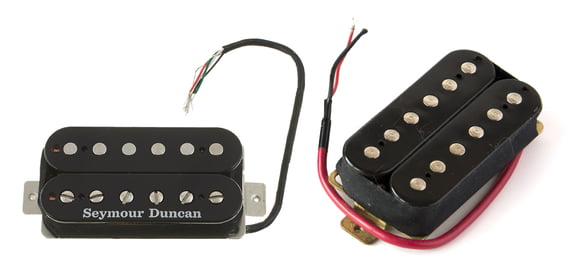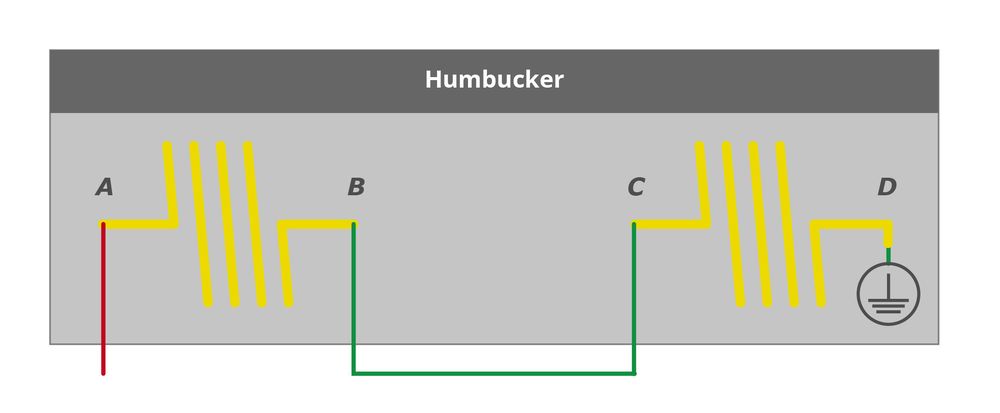7. Humbuckers
As already mentioned, despite their clear and well balanced sound, single coils have a drawback: they tend to hum a lot! The pressure on the industry to create a feedback free pickup grew in the 1950’s afters several not-so successful attempts by manufacturers to reduce unwanted noise in their products. One such attempt came in the form of covering the neck pickup of Fender’s Broadcaster (later known as the Telecaster) with a metal cap. The set-up was completed by installing a copper plate underneath the pickup as well. Something that, in addition to reducing hum, also had a different effect on the sound of the guitar. It was with this modification that the typical Tele ‘twang’ was born. Gibson saw these attempts at reducing noise as rather half-hearted and was dedicated to finding a better alternative. The breakthrough eventually came from Gibson technician Seth Lover. He had the idea to use an additional phase-balanced coil as a means to reduce noise sensitivity. It was a great success and led to the market launch of the pickup concept Humbucker (named for the British English name of the auxiliary coil - Humbucking Coil).

4-wire, 2-wire
Just to review: A humbucker consists of two separate coils which in their standard set-up are serially connected. Many replacement humbuckers come with four separate coil connections (plus a grounding cable), allowing for different circuit variations in addition to the standard humbucker sound.
In the case of two-wire, classic humbuckers, the coils are internally wired (serially), making changes in the connections and additional options such as coil splitting near impossible. 4-wire humbuckers offer a variety of options:
- If you connect the end of one coil spule to the end of the second one, so that the two coils phase-switch in opposition, you'll get the typical out-of-phase sound: Shaky and Nasal.
- If you connect A to D (hot) and B to C it will result in parallel wiring. The sound is clearer and thinner in the middle ranges in addition to losing output power. This wiring variant is often used in high output pickups to achieve a single coil-like sound without losing the hum compensation effect of the coil.
- If you disconnect one coil you'll get a true single coil sound with all its advantages and disadvantages. The sound is higher and clearer but of course more sensative to interference.
These different wiring are accomplished by connecting the coils to each other or to switches. (see also Switches & Co.)
Color Codes
To avoid a mess of identical wires when wiring humbuckers manufacturers mark the connection wires with specific colors. Unfortunately there is no uniform system and everyone has their own way of doing things. But what's there to complain about? We're just happy that the color choices have remained constant over the years! Along with the colors there is usually a diagram showing what goes where. If you've misplaced one of those though and are trying to wire your pickup then the following list may help:
| | A | B | Polarity | C | D | Polarity |
| Anderson | red | green | north | black | white | south |
| DiMarzio | red | black | north | green | white | south |
| Gibson | black | green | north | red | white | south |
| Jackson | green | white | north | black | red | south |
| Schaller | green | white | north | yellow | brown | south |
| Seymour Duncan | black | white | north | green | red | south |
If you want to connect the two coils in standard fashion (serially) you need to connect the end of the first coil (B) with the beginning of the second (C) (solder them together and isolate them).
Additional info
When using a 5-way pickup selector switch, the connection of the coils is done via the contacts on the switch. But more on that later.
Older humbuckers and traditional vintage models usually do not have separate bobbin-type leads. Pickups of this type can only be used as intended: As a humbucker!



